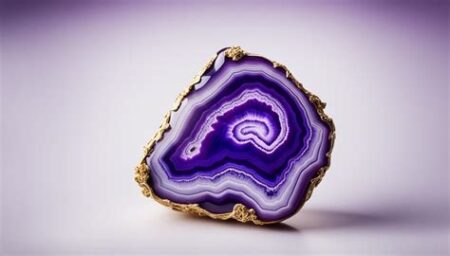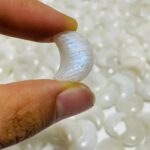Introduction
Under the veil of darkness, a secret world of glowing rocks unfolds. These rocks, known as UV rocks, possess a remarkable ability to absorb ultraviolet (UV) light and emit visible light in its absence. This luminescent phenomenon, called fluorescence, has captivated scientists and nature enthusiasts alike, inspiring myriad applications in various fields.

Understanding Fluorescence in UV Rocks
Fluorescence is the process where certain materials absorb UV light at a specific wavelength and then release it as visible light at a longer wavelength. This unique characteristic enables UV rocks to glow in response to UV light sources, such as sunlight or specialized lamps.
Fluorophores are the molecules within UV rocks responsible for fluorescence. These molecules undergo an energy transition when absorbing UV light, transitioning from a ground state to an excited state. Upon returning to the ground state, they release their excess energy as visible light.
Types of UV Rocks
UV rocks occur naturally in various geological formations around the globe. Some common types include:
Calcites: These minerals often exhibit bright blue or orange fluorescence.
Fluorites: A highly fluorogenic mineral, fluorites can glow in a range of colors, including blue, green, purple, and yellow.
Willemites: These zinc silicate minerals emit a bright green fluorescence.
Scheelites: Composed of calcium and tungsten, scheelites fluoresce yellow to white.
Real-World Applications of UV Rocks
The unique luminescent properties of UV rocks have found practical applications in numerous industries:
Mining and Exploration
UV rocks serve as indicators of mineral deposits. Geologists use UV lamps to detect specific fluorophores associated with valuable minerals, such as uranium, gold, and silver.
Gemology
Fluorescence plays a crucial role in gemstone identification and grading. Certain gemstones, such as diamonds and emeralds, exhibit diagnostic fluorescence under UV light.
Medical Diagnostics
Laser-induced fluorescence spectroscopy (LIFS) utilizes UV lasers to analyze biological samples for disease detection. This minimally invasive technique can identify cancerous cells and other abnormalities.
Industrial Inspection
UV fluorescence is employed in leak detection and quality control processes. By applying UV dyes to pipelines or products, inspectors can detect leaks or flaws that emit visible fluorescence.
Security and Forensics
UV rocks can enhance security measures. Documents, banknotes, and passports often incorporate fluorescent elements that become visible under UV light, aiding in fraud detection and authentication.
Art and Decorative Applications
Artists and designers exploit the luminescence of UV rocks to create captivating artworks and decorative pieces. These works glow brightly under UV lighting, adding an ethereal touch to any space.
Emerging Applications: The Promise of “Fluorescytes”
In recent years, researchers have coined the term “fluorescytes” to describe a new class of materials that exhibit tunable fluorescence. By manipulating their composition and structure, scientists can engineer fluorescytes to emit specific wavelengths of light.
This breakthrough opens up exciting possibilities for novel applications in:
Biotechnology: Fluorescytes can be functionalized to target and illuminate specific biological molecules, enabling advanced imaging and diagnostics.
Optoelectronics: Fluorescytes hold promise for developing highly efficient light sources, sensors, and displays.
Security: Advanced anti-counterfeiting measures can be devised by incorporating fluorescytes with unique luminescent signatures into valuable items.
Table 1: Fluorescence Properties of Common UV Rocks
| Rock Type | Fluorescence Color | Wavelength (nm) |
|---|---|---|
| Calcite | Blue | 400-480 |
| Fluorite | Blue-Green | 420-520 |
| Willemite | Green | 500-580 |
| Scheelite | Yellow-White | 580-650 |
Table 2: Applications of UV Rocks in Various Industries
| Industry | Application |
|---|---|
| Mining | Mineral exploration |
| Gemology | Gemstone identification and grading |
| Medical Diagnostics | Disease detection (LIFS) |
| Industrial Inspection | Leak detection and quality control |
| Security | Document and banknote authentication |
Table 3: Emerging Applications of Fluorescytes
| Application | Description |
|---|---|
| Biotechnology | Targeted imaging and diagnostics |
| Optoelectronics | Advanced light sources and sensors |
| Security | Anti-counterfeiting measures |
Table 4: Common Mistakes to Avoid When Working with UV Rocks
| Mistake | Consequence |
|---|---|
| Exposing rocks to excessive UV light | Degradation of fluorophores |
| Using unfiltered UV light | Eye damage |
| Handling rocks without gloves | Contamination with oils and acids |
Conclusion
UV rocks, with their mesmerizing glow, not only captivate the human eye but also serve a multitude of practical applications. From mineral exploration to security measures, their unique fluorescence has revolutionized industries worldwide. As research continues to explore the potential of fluorescytes, we anticipate even more groundbreaking applications that will reshape the future.




























